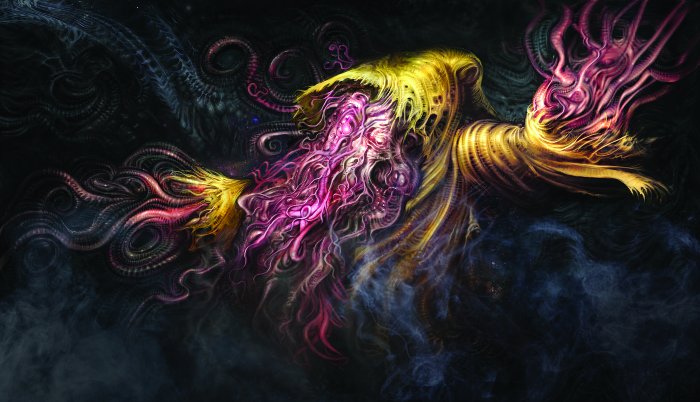Signs of Carcosa
In the end, I (as if there were any doubt) bought Signs of Carcosa. Predictably (given my last post on the topic), I don't care for a lot of it. The new Talents deck, like Glamour spells, is so much cruft. There's a new type of Deal, "Promise of Power", which further dilutes the Deal deck. The Assets deck continues to expand, the new Investigators are fine but not needed, the new spells are (but I repeat myself) fine but not needed, and so on.
But in fairness, I do like Hastur, as the new
Plus each of Hastur's cultists summon a Byakhee on every reckoning, which flies off to ambush the nearest Investigator - and there a lot of cultists in the monster cup these days. And the new Bane condition - "Blight" - is pretty thematic for Hastur.
To be absolutely blunt, I wish FFG would just provide a single booster pack with just an Ancient One, its new Mysteries and associated cards, and requisite conditions (in this case when Hastur awakens the lead investigator is almost certain to acquire a Blight condition, for instance), rather than the existing model. But not everyone has all the expansions, I suppose (and hence not the same plethora of spells and cards), and while I've complained about FFG's model before, I still bought Signs of Carcosa. Feh.
Hastur and The King in Yellow
I also recently read The King in Yellow - a collection of short stories and poetry by American author Robert Chambers, published in 1896 or so. The first four stories all include reference to The King in Yellow, a play that drives those who watch it - or at least its second act - mad. (The Yellow Sign, Carcosa, and the King in Yellow as a figure are all also referred to in the book.) It's very late-nineteenth-century, but also influential on H.P. Lovecraft and his compatriots, as evidenced by Lovecraft's passing references to The King in Yellow as a Mythos tome, just like the (real) Witch-Cult in Western Europe and the (fictional) Necronomicon.There were also a lot of references to The King in Yellow in Season 1 of True Detective, as explained on io9, here. It added to the weird atmosphere of the show, and I thought season 1 was simply brilliant television. Season 2 didn't have the same magic, in my opinion. But I digress.
To be frank, I probably wouldn't have enjoyed The King in Yellow were it not for its association with the Cthulhu Mythos and Lovecraft's writing. It's very much of its era, and the basic premise - Read This Play, Lose Your Mind - seems even more ludicrous than the often overly-fragile psyches of Lovecraft's characters.
By the way, Hastur seems to be a place in Chambers' writing, rather than the malevolent being that August Derleth made him. In the first story, "The Repairer of Reputations", it says:
"He mentioned the establishment of the Dynasty in Carcosa, the lakes which connected Hastur, Aldebaran and the mystery of the Hyades."
 |
| So, not this. (From FFG's website.) |
Of course it wouldn't be nineteenth-century American fiction without some good ol' fashioned racism and anti-Semitism, too. "The Repairer of Reputations", ostensibly set in the United States in the then-near-future 1920 or so, also reads:
"We had profited well by the latest treaties with France and England; the exclusion of foreign-born Jews as a measure of national self-preservation, the settlement of the new independent negro state of Suanee, the checking of immigration, the new laws concerning naturalization, and the gradual centralization of power in the executive all contributed to national calm and prosperity. When the Government solved the Indian problem and squadrons of Indian cavalry scouts in native costume were substituted for the pitiable organizations tacked on to the tail of skeletonized regiments by a former Secretary of War, the nationa drew a long sigh of relief..."Now, in fairness the narrator of "The Repairer of Reputations" is, um...unreliable. I won't say more than that for fear of truly spoiling the story. So it's possible this isn't meant to be entirely true, or that it's the narrator's interpretation of events - after all I'd imaging that reference to "the gradual centralization of power in the executive" might have sounded alarming to American ears. But it's not like such sentiment was uncommon in the U.S. (and Canada) in those days. Or, um, now, given Trump's popularity. Anyway.
It's certainly evocative stuff, if a bit dated. I'd recommend The King in Yellow to fans of the Mythos, but see if the library has it - I wouldn't suggest buying it. Of course, maybe I'm just recommending it because I read the second act.

No comments:
Post a Comment